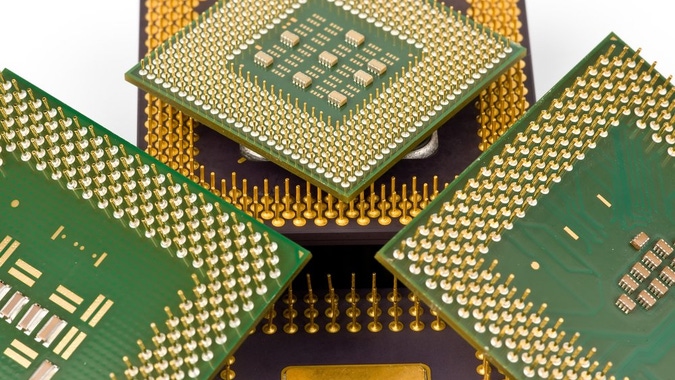Advanced Micro Devices (NASDAQ: AMD) is one of the most hotly-debated stocks in the semiconductor industry. My colleague Sam Quirke at MarketBeat recently outlined some arguments for and against investing in the stock, which included the fact that some analysts trimmed their price targets while still leaving a considerable amount of upside potential. Other comments in the article included that the stock could be hurting from China’s lockdowns and reduced demand for consumer products such as computers and smartphones.
In this article, we’ll further explore the bull and bear cases for investing in AMD based on the stock’s key financial ratios and let the reader decide if it’s worth the risk.

MarketBeat.com – MarketBeat
The Bull Case for Investing in AMD
Analyst ratings for the stock are mostly positive for the last 90 days. Out of 39 analysts, 19 rated AMD as a strong buy, and 7 rated it as a buy, while the rest rated the company as a hold with 1 strong sell rating. The consensus price target for the stock stands at $122.82, with a high of $200 and a low of $63. This shows that analysts could seem to be bullish on the stock in general. It should also be noted that over the last five years, analysts have been accurate in their forecasting for the stock with a low margin of error, except until very recently, in 2022, when the market rotated out of technology stocks.
Another consideration for this stock is its performance against its sector for growth and profitability. The company’s FWD revenue growth stands at 44.59%, while the sector median is 14.72. AMD also outperforms the sector median for YoY revenue growth as it stands at 65.26% compared with 20.56%. AMD’s margins are strong compared with the median. The company’s EBITDA margin of 25.74% compares favorably with the sector’s margin of 13.14%.
The Bear Case for Investing in AMD
One key area where AMD underperforms the sector median is its valuation. The company’s FWD P/E ratio is 27.36 compared with the sector median of 24.52. This could be interpreted as the company’s prospects being better than those in the sector median, which warrants a higher share price. It could be viewed that the company is more expensive than its peers.
There are other valuation ratios that show the stock is more expensive on a relative basis, especially when examining how much it costs to buy one unit of the company’s sales. AMD’s FWD Price/Sales ratio is at 5.41 compared to the sector median of 2.82, or almost twice as expensive.
AMD Vs. Intel Corporation
Intel (NASDAQ: INTC) is AMD’s classical competitor and is a key benchmark for the company. The companies have a similar market cap with AMD’s market cap of 141.86B and 160.11B, respectively. One thing to note is that Intel has a significantly higher number of employees than AMD at 121,100 compared with 15,500. The consensus of Wall St is also divided on the firms, as AMD has a rating of Buy while Intel holds the rating of Hold.
Over the last five years, AMD returned a significantly higher value to investors than intel. AMD returned 520.41%, while Intel returned 28.43%. YTD, both companies are down. AMD is down -39.17%, while Intel is down -22.78%.
A big difference between the stocks as we head into a possible recession is that Intel offers a dividend while AMD does not. Intel’s dividend rate stands at $1.43 and has an FWD yield of 3.73%. It should be noted that Intel has 8 consecutive years of dividend growth.
AMD is relatively more expensive than Intel on an FWD P/E basis. AMD’s FWD P/W stands at 27.36 while AMD’s ratio is 10.32.




